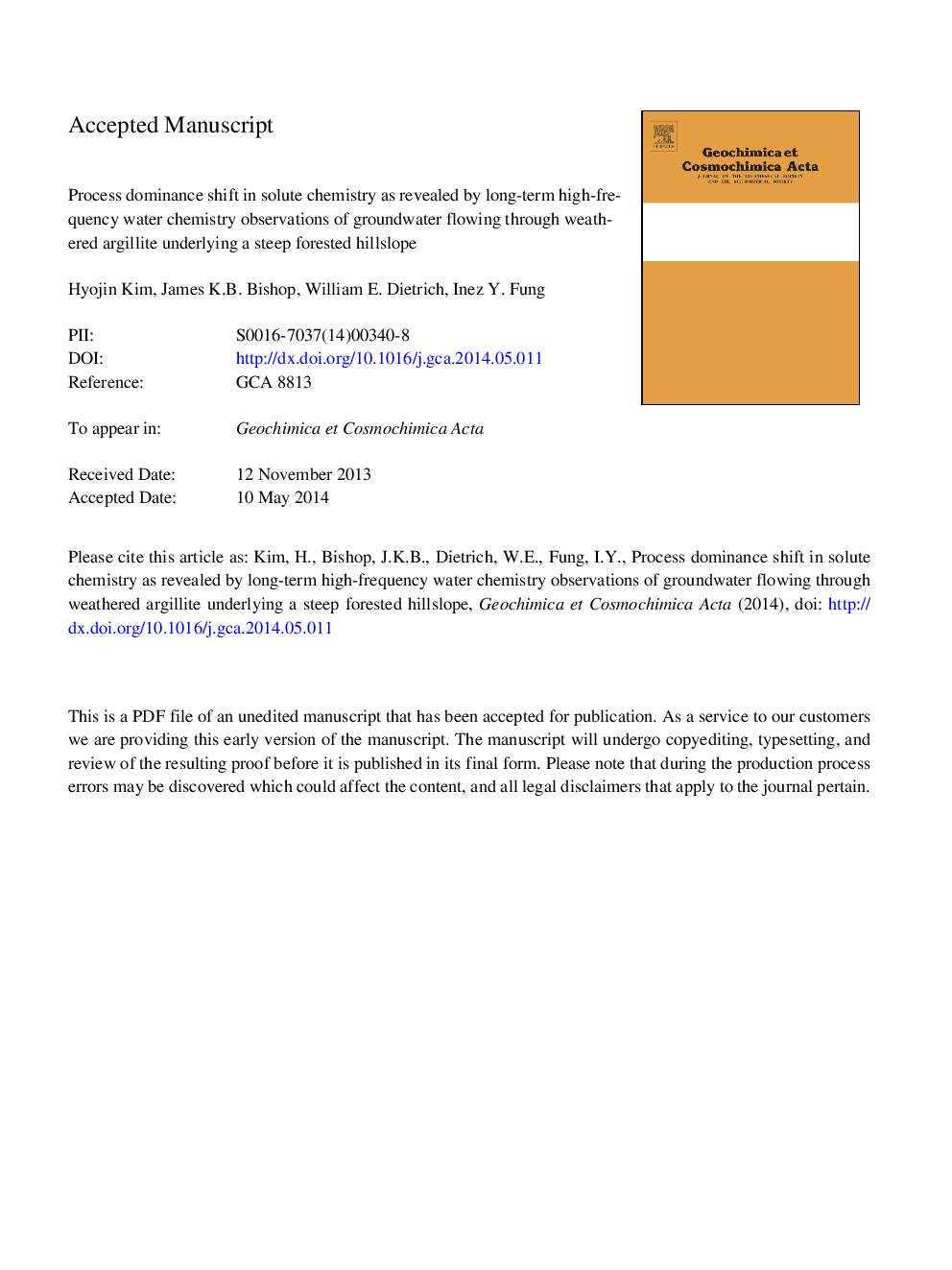| Article ID | Journal | Published Year | Pages | File Type |
|---|---|---|---|---|
| 6438344 | Geochimica et Cosmochimica Acta | 2014 | 57 Pages |
Abstract
All runoff at this soil-mantled site occurs by vertical unsaturated flow through a 5-25Â m thick weathered argillite and then by lateral flows to the adjacent channel as groundwater perched over fresher bedrock. Driven by strongly seasonal rainfall, over each of the four years of observations, the hydrochemistry of the groundwater at each well repeats an annual cycle, which can be explained by two end-member processes. The first end-member process, which dominates during the winter high-flow season in mid- and upslope areas, is CO2 enhanced cation exchange reaction in the vadose zone in the more shallow conductive weathered bedrock. This process rapidly increases the cation concentrations of the infiltrated rainwater, which is responsible for the lowest cation concentration of groundwater. The second-end member process occurs in the deeper perched groundwater and either dominates year-round (at the downslope well) or becomes progressively dominant during low flow season at the two upper slope wells. This process is the equilibrium reaction with minerals such as calcite and clay minerals, but not with primary minerals, suggesting the critical role of the residence time of the water. Collectively, our measurements reveal that the hydrochemistry dynamics of the groundwater in the weathered bedrock zone is governed by two end-member processes whose dominance varies with critical zone structure, the relative importance of vadose versus groundwater zone processes, and thus with the seasonal variation of the chemistry of recharge and runoff.
Related Topics
Physical Sciences and Engineering
Earth and Planetary Sciences
Geochemistry and Petrology
Authors
Hyojin Kim, James K.B. Bishop, William E. Dietrich, Inez Y. Fung,
